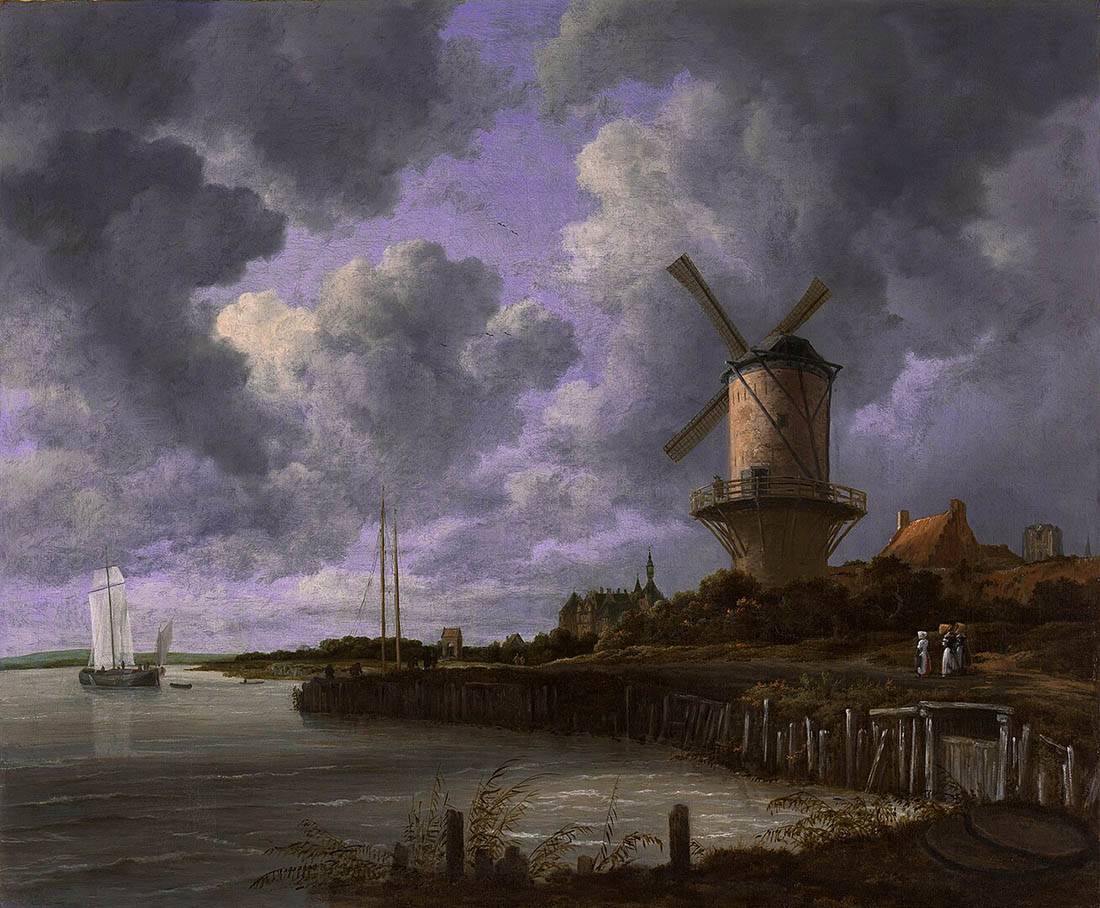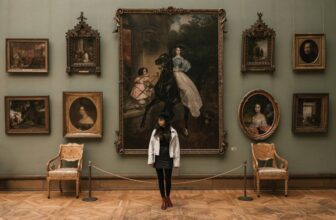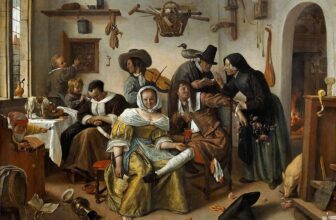
The Best Dutch Golden Age Painters to Buy for Long-Term Appreciation
The 17th century was a golden era for art in the Netherlands , a time of extraordinary creativity, innovation, and cultural prosperity. Known as the Dutch Golden Age, this period produced some of the most admired and valuable artworks in history. Paintings from this time continue to captivate collectors, investors, and art enthusiasts around the world. Whether you’re an experienced art collector or considering your first serious investment, Dutch Golden Age art offers something uniquely compelling: historical significance, enduring beauty, and impressive long-term appreciation potential.
This article explores the best Dutch Golden Age painters to buy for long-term appreciation, the key factors driving their value, and practical insights on collecting these masterpieces wisely.
Why Dutch Golden Age Paintings Are a Smart Long-Term Investment
Investing in art is about more than owning something beautiful , it’s also about preserving and growing wealth over time. Dutch Golden Age paintings have long been prized by museums, institutions, and high-net-worth individuals. But what makes them especially attractive today?
1. Proven Historical Value
Art from the 17th-century Netherlands has stood the test of time. Works by great masters have remained desirable for centuries, often achieving record prices at auction. Their value isn’t based on fleeting trends but on deep historical and cultural significance.
2. Limited Supply
Unlike contemporary art, there are no new Dutch Golden Age paintings being created. The number of works available on the private market is finite , and steadily shrinking as more pieces are acquired by museums and foundations. This scarcity helps drive prices upward over time.
3. Global Appeal
Dutch Golden Age art is universally recognized and admired. Major exhibitions around the world celebrate these works, which makes them appealing to collectors from Europe, North America, and Asia alike.
4. Cultural and Aesthetic Timelessness
The paintings often depict everyday life, landscapes, portraits, and still lifes with extraordinary realism and sensitivity. Their timeless themes resonate with modern audiences, making them both culturally and aesthetically enduring.
Key Characteristics of Dutch Golden Age Painting
Before diving into the artists themselves, it’s helpful to understand what sets Dutch Golden Age painting apart:
Mastery of Light and Shadow: Dutch artists developed techniques to depict light with astonishing realism, giving their paintings a luminous quality.
Realism and Detail: They focused on everyday subjects , bustling cityscapes, serene domestic interiors, and humble still lifes , with meticulous attention to detail.
Portraiture and Genre Scenes: These artists captured not only faces but also the essence of 17th-century Dutch society.
Symbolism and Meaning: Many paintings are rich in allegorical messages, religious symbolism, or moral lessons.
Technical Excellence: Oil painting reached new heights during this period, and their craftsmanship remains unrivaled.
The Best Dutch Golden Age Painters to Buy for Long-Term Appreciation
When building an art collection for long-term value, choosing the right artist is crucial. The following painters are among the most collected, admired, and steadily appreciating names in the Dutch Golden Age.
1. Rembrandt van Rijn
Few names command as much respect in the art world as Rembrandt. His masterful use of light and shadow, emotional depth, and technical genius have secured his place as one of the greatest painters in history.
Why Rembrandt’s Work Appreciates:
His paintings are extremely scarce in private hands.
Major institutions compete to acquire his works.
He remains a cornerstone of Western art history.
Investment Insight:
Original Rembrandt paintings are rarely available and command multimillion-dollar prices when they appear at auction. However, drawings, etchings, and prints can offer a more accessible entry point for collectors looking to invest in this legendary name.
Notable Works:
The Night Watch (1642)
The Anatomy Lesson of Dr. Nicolaes Tulp (1632)
Self-Portraits spanning his career
Market Trend:
Rembrandt’s works have shown consistent appreciation over decades, with record-breaking auction results. For example, a small panel painting can reach tens of millions, while etchings steadily increase in value.
2. Johannes Vermeer
Johannes Vermeer, often called the “Master of Light,” is one of the most beloved artists of all time. His ability to capture quiet domestic moments with exquisite beauty makes his paintings timeless treasures.
Why Vermeer’s Work Appreciates:
He produced only about 35 paintings, and almost all are held in museums.
His name is synonymous with rarity and prestige.
His art appeals to a global audience.
Investment Insight:
Vermeer paintings almost never appear on the open market. However, museum-quality copies, period works from his school, or paintings influenced by him can offer an indirect but valuable investment opportunity. Works by his contemporaries are also experiencing a surge in interest.
Notable Works:
Girl with a Pearl Earring (c. 1665)
The Milkmaid (c. 1658)
View of Delft (c. 1660–1661)
Market Trend:
The mystique surrounding Vermeer fuels demand for any related works or attributions. When a Vermeer is sold, it makes international headlines and drives up market interest in the entire Dutch Golden Age category.
3. Frans Hals
Frans Hals is celebrated for his vibrant, expressive portraits. His loose brushwork was centuries ahead of its time and influenced many later painters, including Édouard Manet and Vincent van Gogh.
Why Hals’s Work Appreciates:
Highly desirable for both private collectors and museums.
Important historical figure bridging realism and impressionism.
Dynamic portraits that feel surprisingly modern.
Investment Insight:
Hals paintings occasionally appear on the market, often with strong competition. Works by his studio or followers are also collectible and more accessible to mid-range investors.
Notable Works:
The Laughing Cavalier (1624)
Portrait of a Man Holding a Skull (c. 1611)
Banquet of the Officers of the St George Militia Company (1616)
Market Trend:
Auction results show steady growth for Hals over the last 30 years. Institutional interest remains strong, ensuring long-term stability.
4. Jan Steen
Jan Steen is known for lively, humorous genre scenes that capture the everyday life of the Dutch Republic with warmth and wit. His paintings are often filled with moral lessons wrapped in festive scenes.
Why Steen’s Work Appreciates:
Distinctive storytelling and lively compositions.
Popular among collectors who appreciate narrative art.
His works are frequently featured in museum exhibitions.
Investment Insight:
Steen’s paintings are more available than Rembrandt’s or Vermeer’s, making them an excellent choice for collectors seeking strong long-term appreciation with lower entry points.
Notable Works:
The Merry Family (1668)
The Dancing Couple (1663)
As the Old Sing, So Pipe the Young (c. 1668–1670)
Market Trend:
Steen’s market has shown steady, moderate growth with occasional spikes during major exhibitions or rediscoveries of attributed works.
5. Jacob van Ruisdael
Jacob van Ruisdael is regarded as one of the greatest landscape painters in history. His dramatic, atmospheric depictions of the Dutch countryside have inspired countless artists and collectors.
Why Ruisdael’s Work Appreciates:
Landscape paintings have broad appeal.
His work bridges realism and romanticism.
Strong presence in major museum collections.
Investment Insight:
Ruisdael paintings are relatively more available than those of Rembrandt or Vermeer, but top-quality works command very high prices. His art is especially sought after in North America and Europe.
Notable Works:
View of Haarlem with Bleaching Fields (c. 1670–1675)
The Jewish Cemetery (c. 1655–1660)
Windmill at Wijk bij Duurstede (c. 1670)
Market Trend:
Landscape painting remains a reliable category for long-term growth. High-quality Ruisdael works often appreciate steadily.
6. Pieter de Hooch
Pieter de Hooch is admired for his peaceful domestic interiors and courtyards, often bathed in gentle sunlight. His mastery of perspective and everyday themes makes his work timeless.
Why De Hooch’s Work Appreciates:
Increasing recognition of his role alongside Vermeer.
Accessible price points compared to top-tier masters.
Quiet elegance appeals to modern collectors.
Investment Insight:
De Hooch paintings are occasionally available and often priced lower than Vermeer but with significant potential for appreciation. They are popular with collectors seeking works in the same vein as Vermeer at a more approachable level.
Notable Works:
Courtyard of a House in Delft (1658)
Woman Drinking with Soldiers (1658)
The Bedroom (1658–1660)
Market Trend:
Steady upward movement as collectors increasingly appreciate his contributions to Dutch Golden Age genre painting.
7. Rachel Ruysch
Rachel Ruysch was one of the most successful female painters of the Dutch Golden Age and a master of floral still life. Her paintings are celebrated for their intricate detail, vibrant colors, and delicate compositions.
Why Ruysch’s Work Appreciates:
High-quality still lifes appeal to a broad collector base.
Historical importance as a pioneering woman artist.
Increasing demand from institutions focusing on female Old Masters.
Investment Insight:
Still lifes by Ruysch are available on the market but often fiercely contested. Their beauty and rarity make them prime candidates for appreciation.
Notable Works:
Still Life with Flowers on a Marble Tabletop (1716)
Flower Still Life (after 1700)
Still Life with Fruit and Insects (c. 1700)
Market Trend:
Growing recognition of women artists has pushed prices steadily higher, and Ruysch is at the forefront of this movement.
8. Adriaen van Ostade
Adriaen van Ostade specialized in genre scenes of peasant life, often infused with humor and warmth. His detailed, character-filled works offer a glimpse into everyday rural life in the 17th century.
Why Ostade’s Work Appreciates:
Popular for their charm and detailed realism.
Accessible price range compared to Rembrandt.
Strong auction presence and collector interest.
Investment Insight:
Ostade’s paintings and etchings can be excellent mid-range investments with room for appreciation as interest in genre scenes continues to grow.
Notable Works:
The Painter in His Studio (1663)
The Schoolmaster (1662)
Peasants in a Tavern (1670)
Market Trend:
Steady collector demand, with notable price growth for works in excellent condition or with strong provenance.
9. Willem Kalf
Willem Kalf was one of the greatest still-life painters of the Dutch Golden Age, known for his opulent “pronkstilleven” (sumptuous still lifes). His works often feature fine glassware, silver, and exotic objects, symbolizing wealth and transience.
Why Kalf’s Work Appreciates:
Rich symbolism and extraordinary technical quality.
Popular among collectors of still life and decorative arts.
Limited supply enhances long-term value.
Investment Insight:
Kalf’s still lifes are more attainable than top-tier portraits, yet offer tremendous cultural weight. They appeal to both art investors and interior collectors.
Notable Works:
Still Life with a Silver Ewer and a Porcelain Bowl (c. 1655)
Still Life with Drinking Horn (1653)
Still Life with a Chinese Porcelain Jar (1669)
Market Trend:
Growing demand for Old Master still lifes is pushing Kalf’s prices upward steadily.
Understanding Value Drivers in Dutch Golden Age Art
When collecting for long-term appreciation, identifying the right artist is only part of the equation. The value of an artwork depends on several interrelated factors.
1. Provenance
A painting with a well-documented history, especially if it has passed through important collections or exhibitions, will typically command a higher price.
2. Condition
Old Master paintings require expert conservation. Works in excellent condition or with minimal restoration are more valuable and easier to resell.
3. Rarity
Unique compositions, major works, or exceptional examples of an artist’s style tend to appreciate faster than more common subjects.
4. Subject Matter
Portraits, landscapes, still lifes, and genre scenes can vary in desirability. For example, iconic portraiture by Hals or luminous interiors by Vermeer have historically outperformed more generic works.
5. Market Timing
Auction cycles, museum exhibitions, and scholarly publications can influence demand. For example, when a major retrospective occurs, prices often rise as interest surges.
The Role of Auctions and Institutions in Value Appreciation
The market for Dutch Golden Age art is heavily influenced by major auction houses and museums. Leading auctions at Christie’s and Sotheby’s regularly feature Old Master paintings, setting benchmarks for value.
When museums acquire works by certain artists, it can also have a ripple effect on the private market. For example, if a newly attributed Vermeer appears at auction, it can trigger increased interest in similar artists like De Hooch or Steen.
Additionally, museum retrospectives and international exhibitions bring these artists back into the spotlight, attracting new collectors and driving long-term demand.
Dutch Golden Age Art vs. Contemporary Art as an Investment
While contemporary art often dominates headlines with record-breaking sales, Old Masters like Rembrandt and Vermeer offer a different kind of investment security.
| Factor | Dutch Golden Age Art | Contemporary Art |
|---|---|---|
| Provenance & History | Centuries-old legacy | Emerging or short-term trends |
| Market Volatility | Historically stable | High volatility |
| Supply | Fixed, no new works | Continual new production |
| Cultural Prestige | Globally recognized heritage | Variable |
| Entry Points | Accessible through drawings/prints | Wide range but often trend-dependent |
Many seasoned collectors combine both categories, balancing the potential high returns of contemporary art with the stability of Old Masters.
Case Studies: Record Sales and Appreciation Trends
A Rembrandt portrait once purchased privately for under $1 million in the 1970s sold decades later for tens of millions , demonstrating remarkable appreciation over time.
A landscape by Ruisdael that sold for modest sums in the 1990s appreciated significantly after a series of exhibitions increased public interest.
Still lifes by Ruysch have more than doubled in price over the past 20 years, fueled by increased attention to women artists.
These examples underscore how time, scarcity, and cultural resonance contribute to sustained value growth.
The Growing Global Interest in Old Masters
Interest in Dutch Golden Age painting isn’t limited to Europe. Collectors from the U.S., Asia, and the Middle East are increasingly acquiring these works. Wealth preservation strategies among global investors often include blue-chip art as part of a diversified portfolio.
Institutions in emerging markets are also establishing museums and collections, creating new demand for classic European art. This expanding global collector base supports long-term price appreciation.
Dutch Golden Age Paintings as Investment Assets
The market for Dutch Golden Age paintings remains strong, with indicators pointing toward continued growth. Three main factors drive this optimistic outlook:
Cultural Timelessness: The universal appeal of these works transcends trends.
Rarity: No new supply ensures upward pressure on prices.
Institutional Interest: Museums and foundations continue to acquire and exhibit these masterpieces.
As global wealth grows and more collectors seek stable, historically significant assets, demand for Dutch Golden Age works is likely to increase further.
Investing in a Timeless Legacy
Collecting Dutch Golden Age paintings is more than an investment strategy , it’s an engagement with history, beauty, and human creativity at its finest. Whether it’s the intimate glow of a Vermeer interior, the bold brushwork of a Hals portrait, or the serene landscapes of Ruisdael, these works speak across centuries.
For collectors seeking long-term appreciation, the Dutch Golden Age offers a rare combination of cultural prestige, aesthetic power, and financial resilience. As markets evolve, the legacy of these 17th-century masters remains unshakably strong.
Investing in their art is, in essence, investing in timelessness.
Quick Reference: Top Dutch Golden Age Painters for Investment
| Artist | Specialty | Investment Appeal |
|---|---|---|
| Rembrandt van Rijn | Portraits, Biblical scenes | Ultra-rare, blue-chip value |
| Johannes Vermeer | Domestic interiors, portraits | Extreme rarity, museum appeal |
| Frans Hals | Expressive portraiture | Modern aesthetic, institutional demand |
| Jan Steen | Genre scenes | Narrative richness, strong collector interest |
| Jacob van Ruisdael | Landscapes | Stable appreciation, broad appeal |
| Pieter de Hooch | Domestic scenes | Rising interest, accessible entry point |
| Rachel Ruysch | Floral still lifes | Growing demand for women artists |
| Adriaen van Ostade | Genre scenes | Affordable entry, steady growth |
| Willem Kalf | Sumptuous still lifes | Decorative appeal, symbolic power |




